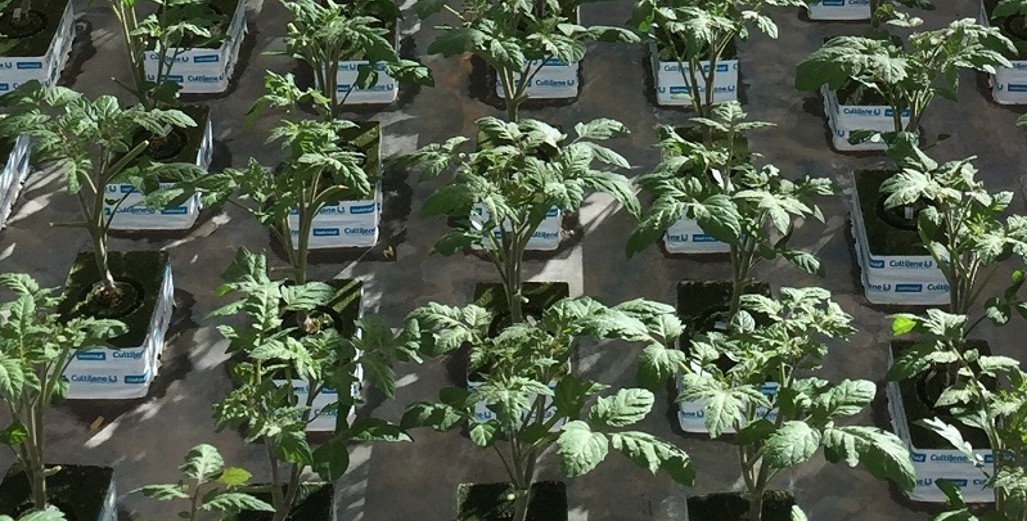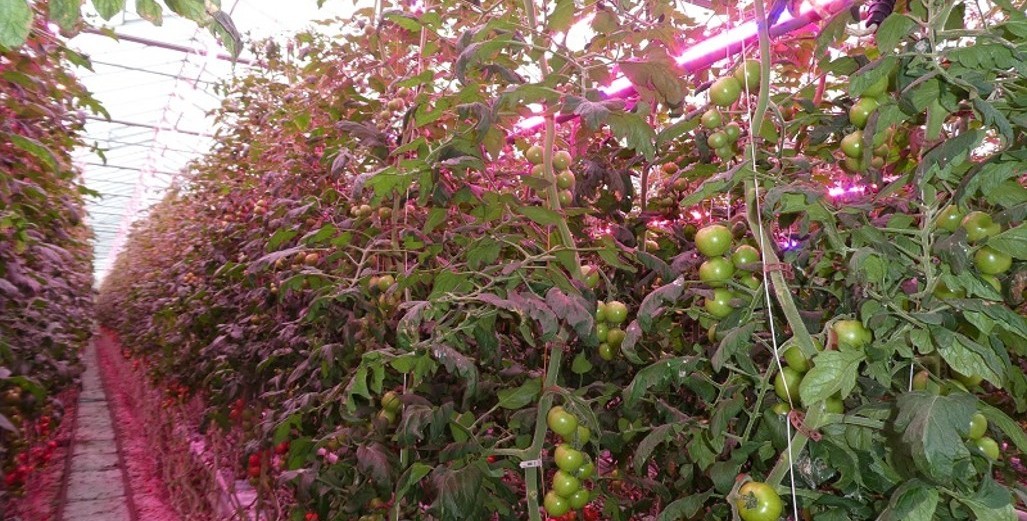Sign up here to subscribe to the Grower2grower Ezine. Every two weeks you will receive new articles, specific to the protected cropping industry, informing you of industry news and events straight to your inbox.
Sep 2021
The Future of High-Tech Horticulture, Compounds over Kilos
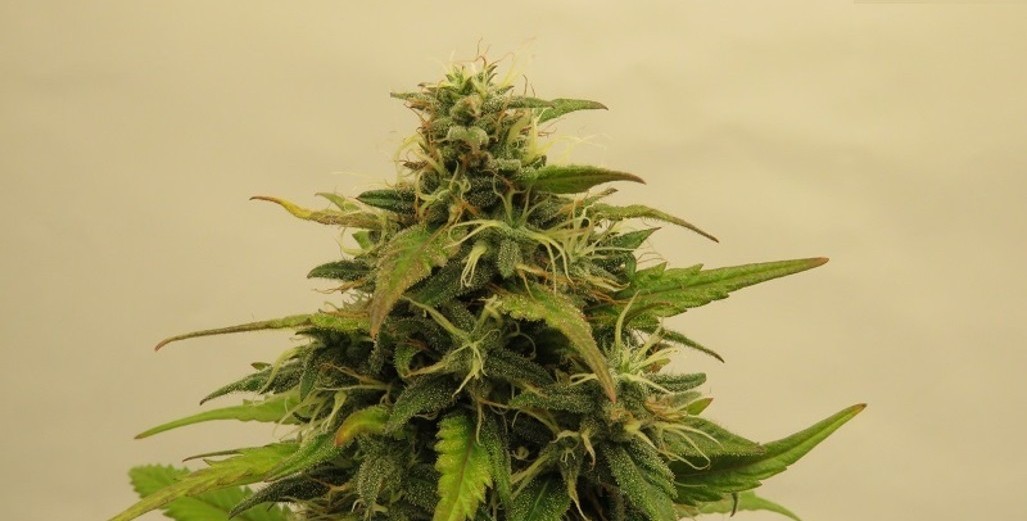
Cultivators Observe a Shift in Cannabis Compound Production instead of Production for Kilograms
Artcile supplied by Cultivators https://www.cultivators.nl/
Introduction
With experience in the recreational and medicinal cannabis industry Cultivators observes a shift towards compound production instead of production for kilograms. Ensuring safe & sound ingredients is critical for cannabis growers. With this observation a multidisciplinary team of students from Wageningen University has been commissioned to interview stakeholders within the supply chain and perform a literature study. Their report investigated which cropping methods and crop strategies exist and can be used to steer for certain secondary metabolites, responding to the needs of cannabis buyers and consumers. This was done via the following questions:
- Which aspects of cannabis cultivation are currently being focussed on when steering and controlling for compounds?
- What opportunities for compound cannabis cultivation exist in other compound cultivated crops?
- What compound composition and plant structure in harvested cannabis is desirable for post-harvest processing industries in response to their needs?
Cultivation Methods
Cannabis sativa L. is mainly cultivated for its flowers. It is believed that in cannabis cultivation, the composition and concentration of these secondary metabolites (e.g. cannabinoids and terpenes) are more important than the overall yield. Cultivation methods that alter the growing environment have the potential to influence the composition and concentration of secondary metabolites. However, these correlations are not completely understood yet.
The concept of crop steering has become a popular topic in cannabis cultivation. For traditional crops where yield is of great interest, the focus in cannabis cultivation may shift to cultivation for compounds. Unfortunately, there is little information on cultivation steering in cannabis, leaving growers to rely on anecdotal information. This presents a challenge for both experienced and inexperienced growers to improve their knowledge on crop steering. Crop steering is the manipulation of the growing environment to influence e.g. hormonal levels within the plant which result in a desired plant structure and/or chemical profile. Crop steering utilizes cues that promote vegetative or generative growth through three main factors: Climate, root zone and crop architecture management. Steering vegetatively tends to be done through low electrical conductivity (EC), higher water content, lower VPD, lower temperatures, and lower light intensities. Steering generatively is obtained with more stressful environments through higher EC, lower water content, higher VPD, drought stress, higher temperatures, and higher light intensities.
The dry floral yield and cannabinoid concentration within C. sativa is mainly controlled through breeding and selection of phenotypes (Muntendam et al., 2012). Although the phenotype is largely determined by genetics, depending on the degree of plasticity, altering the environment allows for expression of different phenotypes (Fig. 1). When steering for compounds, the phenotypic expression traits of interest are mainly; cannabinoid profile, terpene profile, trichome size and density, and effects (medicinal or recreational). Control over phenotypic expression drives revenue, as the previously mentioned characteristics determine variables such as; active-compounds kW-1, extract-yield batch-1, operating-cost pound-1, trim-to-flower-ratio. Expression of phenotypic traits are mainly determined by ten parameters: light, temperature, airflow, temperature, nutrients, microbes, oxygen, water, carbon dioxide, humidity. Within cannabis different cultivation methods have shown to be effective in steering the cannabinoid concentration. Methods that have shown to be effective are lighting (Magagnini et al., 2018), fertilization (Bócsa et al., 1997; Caplan et al., 2017), substrate (Caplan et al., 2017), air temperature (Chandra et al., 2011; Latta & Eaton, 1975), and photoperiod (Potter, 2009).
.jpg)
Figure 1 The degrees of plasticity affect how environmental parameters influence the phenotype
Drought Stress
Controlled drought stress (dry-backs) overnight or between irrigation cycles (Fig. 2) can be a useful tool to enhance the production of secondary metabolites in oil-producing crops (Caplan et al., 2019). Utilizing the effect of dry-backs on secondary metabolites depends on the choice of appropriate growing substrate. Substrates can differ in their physical properties, substrates with a lower water holding capacity require more frequent irrigations to maintain stable water content compared to substrates with higher water-holding capacity (Raviv and Lieth, 2008; Zheng, 2016). Most greenhouse or indoor facilities where C. sativa is cultivated have soilless cultivation systems which use peat-based substrates or inert substrates such as stone wool (Farag and Kayser, 2015). Full control over water content within the substrate allows for controlled exposure to stress which might lead to an increased production of secondary metabolites within C. sativa (Caplan et al., 2018). Drought stress has shown to be a major stimulator of secondary metabolites in several herbaceous species (Baher et al., 2002; Bettaieb et al. 2009; Kleinwächter and Selmar, 2015). It has been shown that not only the concentration of secondary metabolites is increased by drought stress, but also a higher oil yield was observed (Bettaeib et al., 2009; Nowak et al., 2010). However, drought stress can also be associated with lower yields due to reduced rates of carbon assimilation resulting from stomatal and metabolic limitations (Chaves, 1991; Flexas et al., 2002). For this reason, it is important to apply the right timing and level of drought stress to minimize yield reduction while maximising secondary metabolite concentrations (Nakawuka et al. 2014).
.png)
Figure 2 Irrigation practices for applying controlled drought-stress during the dark period (source: Trym – Growers Guide to Crop Steering)
Flowering in C. sativa lasts between seven and twelve weeks depending on the cultivar and growing conditions (Potter, 2014). C. sativa inflorescences have been shown to increase in mass most during the first four to six weeks of flowering. For this reason, applying drought stress during the early stages of flowering would not be beneficial as yields could be negatively affected.
Conclusion
Many classic cultivation parameters (light quality, intensity, etc.) have been researched for cannabis cultivation. These cultivation methods have been widely applied but their effects have not been tested sufficiently. As cannabis is highly hybridized due to interspecific hybridization between subspecies different responses are seen between studies. In addition to cultivar differences, differences in parameters are seen in studies which are dedicated to light quality and intensity. Which makes comparing results a challenge. The effect of nutrient composition on secondary metabolism is a not well covered subject and seems to be currently dependent on the chosen cultivar, the substrate, and the plant’s development stage. Cultivation methods that allow for controlled stress, such as drought stress, might see future applications in steering for compounds. The cannabis industry is still quite new and more research on cannabis, standardization, and genomics is required. Cultivation specifically for compounds is an even newer field, and scientifically literature on this in the context of cannabis is more limited. To identify possible methods that could improve secondary metabolite concentration the next section investigates cultivation methods used in other crops.
Opportunity for cultivation for compounds in different crops
Cultivation for high secondary metabolite concentration has been the focus long before professionalization of the cannabis market. But recently, expertise entering the cannabis cultivation industry from different horticultural backgrounds has led to a more scientific approach in improving compound yields and overall quality.
Although some research has been focused on secondary metabolite content in other crops, the cannabis market can be seen as a leading crop for this. Other crops grown for compounds like for instance vanilla for flavor compounds, herbs grown for flavor or crops grown for medicinal are not yet focused on altering or selecting for specific compounds, and are currently only focused on establishing high yields, and quality is not specifically expressed in compound composition (Filip van Noort, Researcher Wageningen University & Research, personal communication).
The largest developments in research concerning cultivation methods in cannabis cultivation have been in optimizing growth conditions. Especially lighting (spectrum) has shown promising results in influencing the secondary metabolite pro-file in other crops (Manivannan et al., 2015; Ortega-Hernández et al., 2019; Shiga et al., 2009).
Connection between grower and processors
To provide an insight in the needs of different industries regarding cannabis cultivation, and more specifically compound based cannabis cultivation. Interviews were conducted with different players involved in the industry. Companies were approached in all representing sectors within the type cannabis industry: Hemp, recreational, wellness, medicinal and pharma and other players in the chain like growers, breeders and experts related to the field (Fig. 3). In this chapter we give an overall summary of their ideas on questions related to compound-based cannabis cultivation.

Figure 3 market overview cannabis industry
Conclusion
The requests of compound composition in cannabis (including hemp) are varying among the different industries.
The interviews were able to provide insights into different layers of the cannabis industry. Due to the time constraints of the project and the way the interviews were conducted, they can provide views from experts in the field, but not a universal truth for the industry. Further research should focus on large-scale questionnaires to get complete views.
In the pharmaceutical and medical cannabis industry, the desired compounds are determined by the effect upon the end-users. The composition of the compounds must be consistent and therefore a controlled and stable growing environment is required. If no scientific effect of individual cannabinoids or combinations of cannabinoids other than CBD and THC has been demonstrated, they are of no interest to this industry. However, the lack of intellectual property protection combined with the large investment that is needed makes it unlikely that clinical trials of cannabinoids will be conducted.
It seems that in the recreational cannabis industry, there is more room for cultivars that have a clear cannabinoid and terpene profile to respond to customers’ wishes. Due to the illegality of recreational cannabis cultivation in most countries, consistency of compositions is not given. Moreover, there is no standardized form of quality testing to guarantee a certain compound profile. These issues need to be addressed before individual compound profiles are sought.
In the wellness industry, the composition of compounds is currently not of foremost importance. However, if there is more regulation of CBD use and quality standards, this could change.
Discussion & Advice
Based on our interviews, it currently seems that there is no self-awareness and clear product requirements of processors, which makes it difficult for cultivators to comply to required quality standards. Therefore, we recommend to promote and enforce active communication between processors and growers by showing the mutual benefits in this relationship. This could happen by inviting both parties to a conference.
The interviewed experts agreed that secondary metabolite profile is determined by genotype and thus is mainly controlled by breeding rather than by the environment. However, once cultivation has been standardized, GACP and GMP have been established and consistent production is realised, implementation of cultivation methods to steer for compounds and improve quality can be implemented. Crop steering can potentially alter secondary metabolite composition. The most promising methods are light spectrum modification (UV-B, increased blue light), and controlled abiotic stress. These methods could further improve product quality and compound yields in the future.
The industry has not yet reached the stage where steering and controlling is applicable to compounds. In 5-10 years, when growers and processors are in active exchange, cultivation is standardised, methods for steering and controlling are scientifically proven, they could be applicable for high quality products. As long as this is not the case, we advise to:
- Establish communication between growers and processor to better identify areas of improvement.
- Focus on standardization and quality control to meet the needs of the processors and market.
- Cultivation methods that are most promising in improving product quality, in terms of compound content, are light spectrum modifications and application of controlled abiotic stress.
References
Bócsa, I., Máthé, P., & Hangyel, L. (1997). Effect of nitrogen on tetrahydrocannabinol (THC) content. Journal of International Hemp Association, 1–6. h
Baher, Z. F., Mirza, M., Ghorbanli, M., & Bagher Rezaii, M. (2002). The influence of water stress on plant height, herbal and essential oil yield and composition in Satureja hortensis L. Flavour and Fragrance Journal, 17(4), 275-277.
Bettaieb, I., Zakhama, N., Wannes, W. A., Kchouk, M. E., & Marzouk, B. (2009). Water deficit effects on Salvia officinalis fatty acids and essential oils composition. Scientia horticulturae, 120(2), 271-275.
Caplan, D., Dixon, M., & Zheng, Y. (2017). Optimal rate of organic fertilizer during the flowering stage for cannabis grown in two coir-based substrates. HortScience, 52(12), 1796–1803.
Caplan, D., Dixon, M., & Zheng, Y. (2019). Increasing inflorescence dry weight and cannabinoid content in medical cannabis using controlled drought stress. HortScience, 54(5), 964–969.
Chandra, S., Lata, H., Mehmedic, Z., Khan, I. A., & ElSohly, M. A. (2015). Light dependence of photosynthesis and water vapor exchange characteristics in different high δ9-THC yielding varieties of Cannabis sativa L. Journal of Applied Research on Medicinal and Aromatic Plants, 2(2), 39–47.
Chaves, M. M. (1991). Effects of water deficits on carbon assimilation. Journal of experimental Botany, 42(1), 1-16.
Farag, S., & Kayser, O. (2015). Cannabinoids production by hairy root cultures of Cannabis sativa L. American Journal of Plant Sciences, 6(11), 1874.
Flexas, J., & Medrano, H. (2002). Drought‐inhibition of photosynthesis in C3 plants: stomatal and non‐stomatal limitations revisited. Annals of botany, 89(2), 183-189.
Kleinwächter, M., & Selmar, D. (2015). New insights explain that drought stress enhances the quality of spice and medicinal plants: potential applications. Agronomy for sustainable development, 35(1), 121-131.
Latta, R. P., & Eaton, B. J. (1975). Seasonal fluctuations in cannabinoid content of Kansas marijuana. Economic Botany, 29(2), 153-163.
Magagnini, G., Grassi, G., & Kotiranta, S. (2018). The Effect of Light Spectrum on the Morphology and Cannabinoid Content of Cannabis sativa L. Medical Cannabis and Cannabinoids, 1(1), 19–27.
Manivannan, A., Soundararajan, P., Halimah, N., Ko, C. H., & Jeong, B. R. (2015). Blue LED light enhances growth, phytochemical contents, and antioxidant enzyme activities of Rehmannia glutinosa cultured in vitro. Horticulture Environment and Biotechnology, 56(1), 105–113.
Muntendam, R., Kayser, O., Happyana, N., & Erkelens, T. (2012). Genetic and Metabolic Studies of Cannabinoids in Standardized Medicinal Cannabis sativa Time Dependent Metabolomics and Transcriptional Analysis of Cannabinoid Biosynthesis in Cannabis sativa var. Bedrobinol and Bediol Grown under Standardized Condition. Online International Journal of Medicinal Plants Research, January 2012.
Nakawuka, P., Peters, T. R., Gallardo, K. R., Toro-Gonzalez, D., Okwany, R. O., & Walsh, D. B. (2014). Effect of deficit irrigation on yield, quality, and costs of the production of native spearmint. Journal of Irrigation and Drainage Engineering, 140(5), 05014002.
Nowak, M., Kleinwaechter, M., Manderscheid, R., Weigel, H. J., & Selmar, D. (2010). Drought stress increases the accumulation of monoterpenes in sage (Salvia officinalis), an effect that is compensated by elevated carbon dioxide concentration. Journal of Applied Botany and Food Quality, 83(2), 133-136.
Ortega-Hernández, E., Nair, V., Welti-Chanes, J., Cisneros-Zevallos, L., & Jacobo-Velázquez, D. A. (2019). Wounding and UVB light synergistically induce the biosynthesis of phenolic compounds and ascorbic acid in red prickly pears (Opuntia ficus-indica cv. Rojo Vigor). International Journal of Molecular Sciences, 20(21), 1–26.
Potter, D. J. (2014). A review of the cultivation and processing of cannabis (Cannabis sativa L.) for production of prescription medicines in the UK. Drug testing and analysis, 6(1-2), 31-38.
Raviv, M., Lieth, J. H., Bar-Tal, A., & Silber, A. (2008). Growing plants in soilless culture: operational conclusions. Soilless culture: Theory and practice. Raviv, M and JH Leith (ed) Elsevier, 545-567.
Shiga, T., Shoji, K., Shimada, H., & Hashida, S. (2009). Effect of light quality on rosmarinic acid content and antioxidant activity of sweet basil. Plant Biotechnology, 259, 255–259.
Zheng, Y. (2016). Root zone environment management in container crop production. Proc. for the Veg., Potato, Greenhouse, Small Fruit & Gen. Session. Mid-Atlantic Fruit & Veg. Convention, Hershey, 111–112.
CLASSIFIED
Subscribe to our E-Zine
More
From This Category
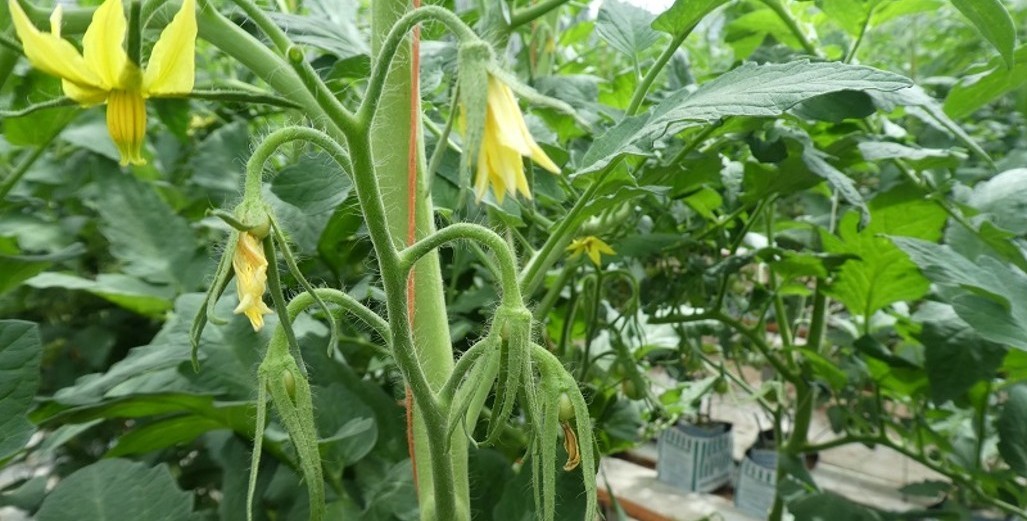
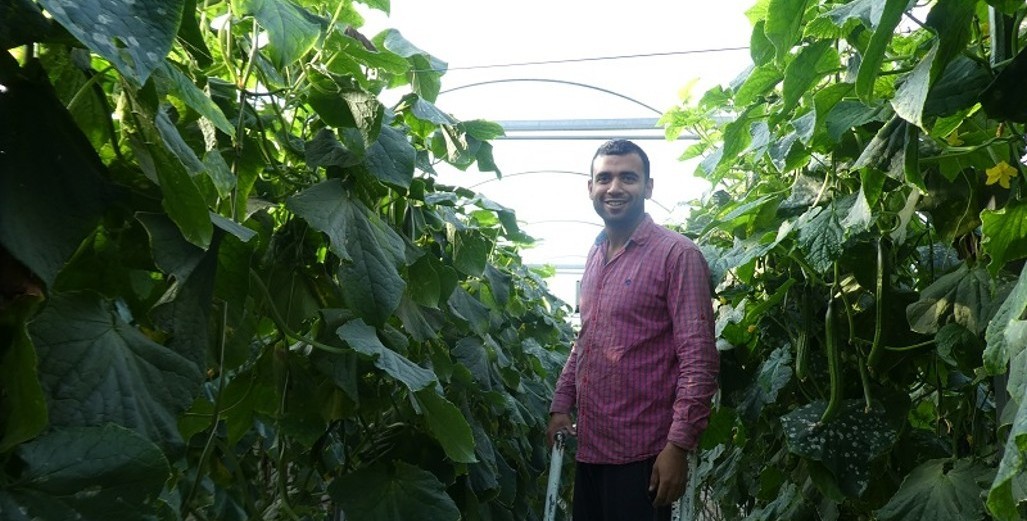
Managing Labour During the Christmas holiday break
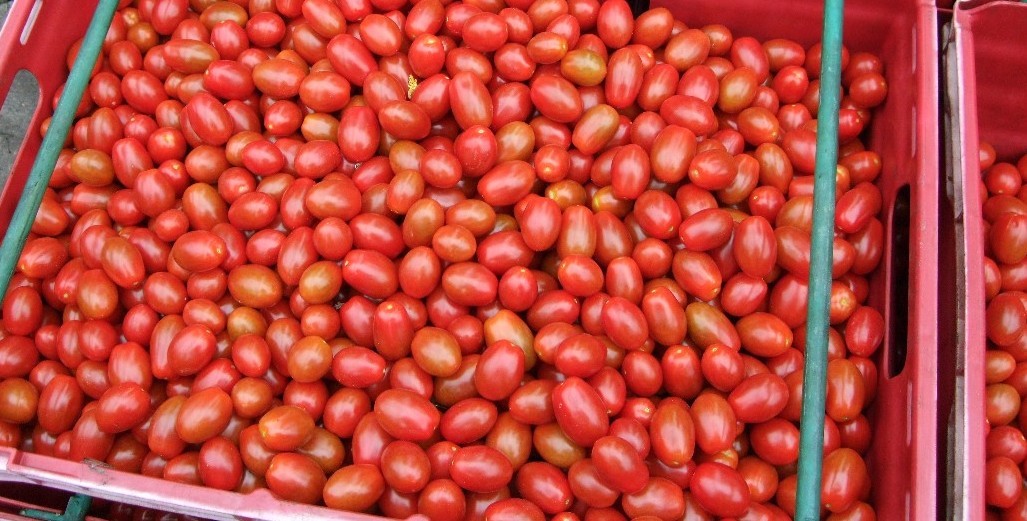
Back to basics

The Future of High-Tech Horticulture, Compounds over Kilos
